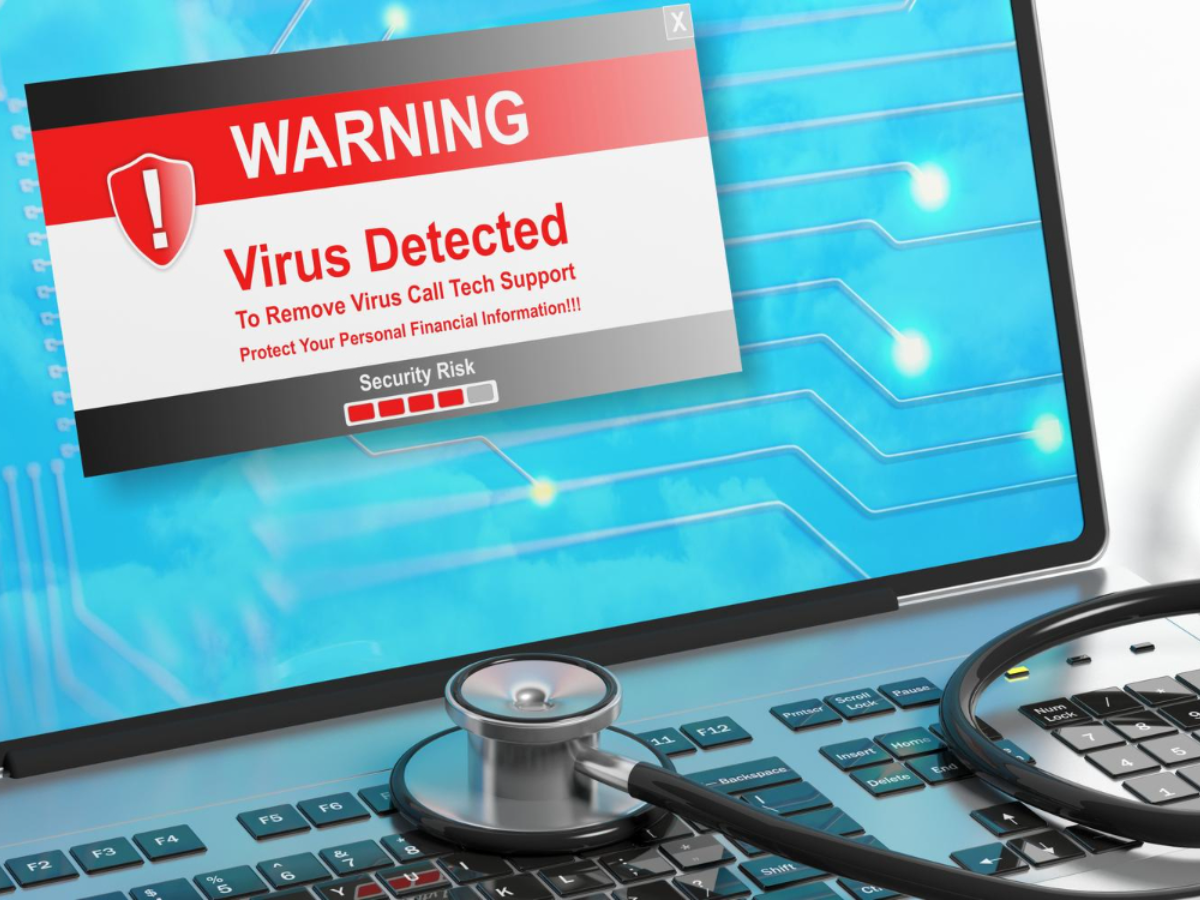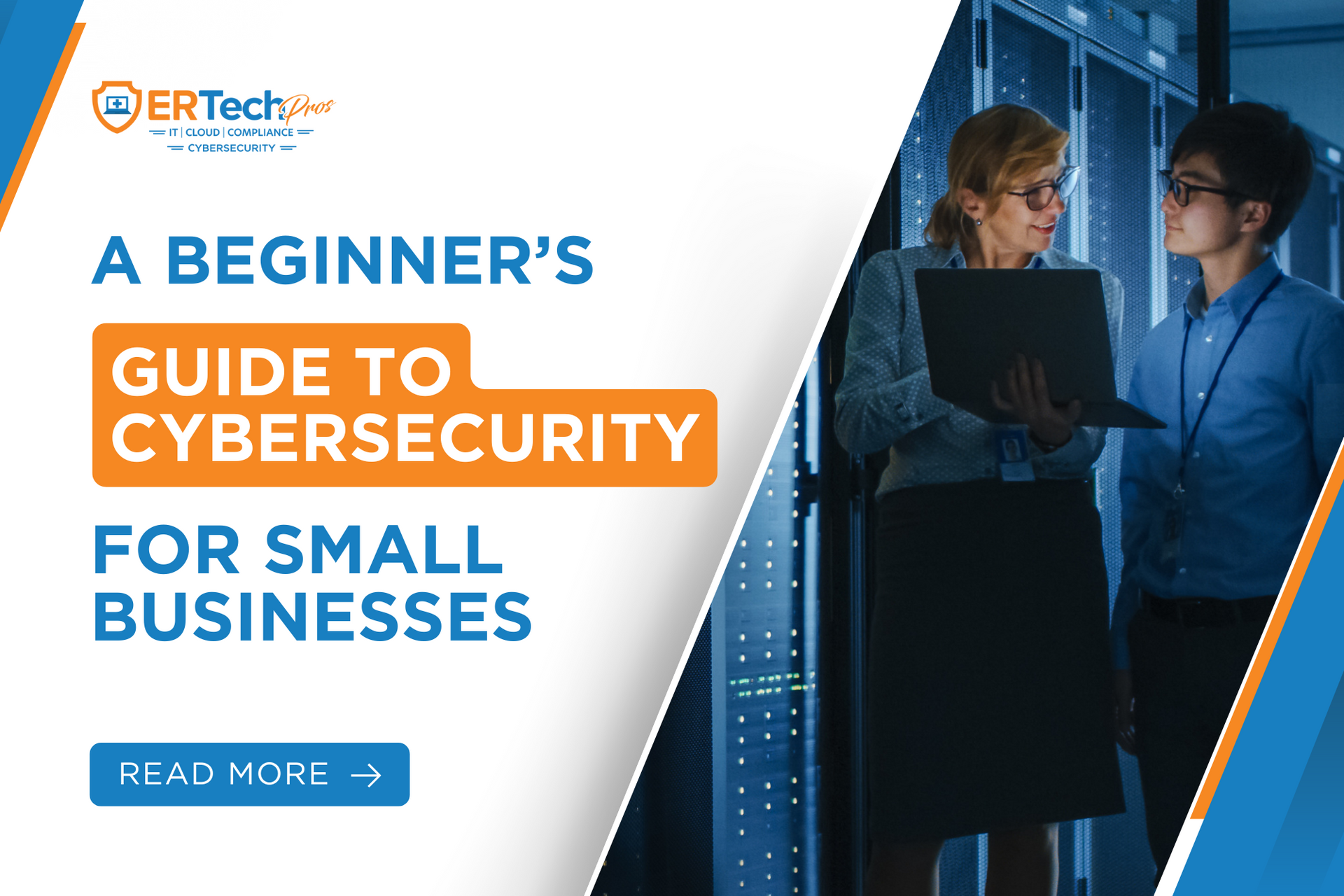Cybercriminals exploit
medical cybersecurity risks at every level of operations, from ransomware that paralyzes hospital systems to phishing scams targeting unsuspecting staff.
To safeguard patient data and maintain seamless care, organizational leaders must abandon reactive responses in favor of proactive cybersecurity strategies.
- Healthcare executives must prioritize investment and compliance.
- IT teams should track emerging healthcare cyber threats.
- Clinical staff must adopt secure digital habits.
In this post, we uncover all the cybersecurity challenges healthcare centers face and offer practical guidance that decision-makers, IT personnel, and frontline clinicians can take to stay protected.
Is Your Cybersecurity Plan Falling Short?
The Biggest Cyber Threats in Healthcare Centers
A cyber threat evolves from an isolated case to a widespread norm when attackers see success and repeatability.
What starts as a one-off breach inspires imitation, especially when others see it as profitable and easy to replicate. This creates a high-risk environment for healthcare organizations, exacerbated by limited IT budgets and chain reactions caused by:
- Delays in patching
- Lack of staff training
- Relying on outdated systems
- Missing early warning signs
This lack of uniform defense makes the entire healthcare industry fertile ground for repeated exploitation. As incidents rise, the threat becomes normalized, attracting regulatory attention (e.g., HIPAA compliance) and prompting industry response.
This pattern has played out repeatedly in U.S. healthcare, where hospitals, clinics, and specialty centers now face a consistent wave of cyber threats, including:
Ransomware Attacks
Ransomware doesn’t knock; it breaks in, locks up your systems, and demands a payout. Since ransomware often enters through phishing or user error, protecting against it requires robust threat detection, user training, and layered cybersecurity controls.
Phishing Scams
Phishing remains one of the most successful and scalable cyberattack methods. The email looks real, the message seems urgent, and before you know it, someone’s clicked a bad link or sent out credentials.
The best defense? Consistent training, strong filters, and staff who develop healthcare cybersecurity best practices.
Data Breaches
Sometimes it’s a hacker. Other times, it’s someone clicking the wrong link. In both cases, the results are steep: exposed data, broken trust, and looming penalties.
Protecting sensitive patient information must be a priority, not an afterthought. Executives must drive strict compliance, and IT teams must close every security gap.
Internet of Things (IoT) Vulnerabilities
For every smart device that speeds up care, there may be a blind spot that weakens your patient data security. Lacking native encryption or patching mechanisms, smart monitors and other IoT devices offer cybercriminals low-resistance access points.
Recent Cybersecurity Incidents in U.S. Healthcare
No corner of American healthcare is immune from cyber disruption as attacks grow more frequent, targeted, and damaging. Two recent breaches offer sharp lessons for healthcare leaders, IT teams, and policymakers.
Texas Tech Health Sciences Center Breach
- Scope: Six schools and five satellite campuses, serving 2.75 million+ Texans
- Leak Details: Social Security numbers, financial account details, and medical data (claims and treatment information)
- Attacker: Interlock ransomware group
This ransomware attack paralyzed a major academic healthcare institution in September 2024. It exposed various personal and medical information, highlighting how invasive modern ransomware threats have become.
UnitedHealth Data Leak
- Scope: Impacting systems that manage health data for approximately 190 million Americans
- Attack Method: Hackers used a stolen account credential that lacked multi-factor authentication (MFA)
- Attacker: ALPHV ransomware gang
This breach targeted one of the most influential players in American healthcare infrastructure. This February 2024 incident delivers a stark reminder: Even the largest, most resource-rich healthcare organizations are vulnerable without fundamental cybersecurity safeguards like MFA.
Regulatory Measures and Compliance
Compliance frameworks like HIPAA are foundational, but they’re falling behind. Further, true cybersecurity in healthcare won’t come from regulation alone—it happens when compliance meets capability and policy meets practice.
Health Insurance Portability and Accountability Act (HIPAA)
As cybersecurity compliance in healthcare tightens, cyberattacks are becoming more frequent and sophisticated. While HIPAA establishes the essential legal standards for protecting patient health data, simply meeting these requirements is no longer enough to ensure security. Executives face escalating fines and eroding patient trust if breaches occur.
Proposed Cybersecurity Regulations
In Q4 of 2024, HHS proposed its first HIPAA Security Rule update in over a decade to respond to escalating cyber threats in healthcare.
The updated rule would require health plans, providers, clearinghouses, and business associates to strengthen healthcare IT security for electronic protected health information (ePHI), aligning with modern cybersecurity best practices.
Key changes cover regular testing and updates of security protocols, as well as better defense against internal and external threats. While the new rule is under review, the existing Security Rule remains in effect.
Best Practices for Enhancing Cybersecurity in Healthcare Centers
- Endpoint Security: Involve security professionals immediately upon threat detection to contain and remediate risks.
- Cybersecurity Awareness Training: Implement interactive video modules paired with assessments to keep staff engaged and informed.
- Simulated Phishing Campaigns: Regularly send friendly, realistic practice emails to help staff recognize common phishing attempts and sharpen their skills. Provide targeted training for high-risk employees.
- Email Security: Use sandboxing techniques (e.g., detonation chambers) to isolate and analyze suspicious emails before they reach inboxes.
- Healthcare Network Security: Employ deep packet inspection and traffic encryption to monitor and protect sensitive data flowing across networks.
“I’ve always found ER Tech IT engineers to be proactive in dealing with issues that our clinic hasn’t even discovered yet. I also like how they communicate the problem and solution to us clearly, especially when most of us aren’t familiar with the technicalities of certain issues.”
Dr. Naveen Samuel
Samuel Dental Care
Stay Ahead of Threats with Proven Healthcare Cybersecurity Solutions
Cyberattacks on healthcare centers have shifted from occasional crises to ongoing challenges that require a unified, proactive response.
Protecting sensitive patient data and maintaining continuous care requires every level of the organization to step up against:
- Cyber threats, like ransomware and phishing, that target all operational layers.
- Reactive approaches that are no longer enough to safeguard healthcare systems.
Elevate your healthcare cybersecurity today! With ER Tech Pros, you get an industry partner for expert-managed firewalls, customized multi-factor authentication, and detailed vulnerability assessments.
Together, we’ll empower your staff with security training and respond swiftly to incidents—protecting your patients and operations.
Safeguard Your Healthcare Center
FAQs on Healthcare Cybersecurity
Why is cybersecurity so important for healthcare centers?
Because healthcare centers handle patient information and rely on systems to care for patients, protecting that data keeps patients safe and care running smoothly.
What are the most common cybersecurity challenges in healthcare?
The biggest problems are attacks like ransomware, phishing emails, data leaks, and weaknesses in connected medical devices.
How often should healthcare organizations assess their cybersecurity posture?
Regular assessments, at least annually or after major system changes, help identify vulnerabilities before attackers do. Some organizations conduct quarterly audits or continuous monitoring.
How can managed IT services help with healthcare cybersecurity?
Managed IT teams watch for threats, update security, train staff, and respond quickly to attacks so healthcare centers stay safe.















